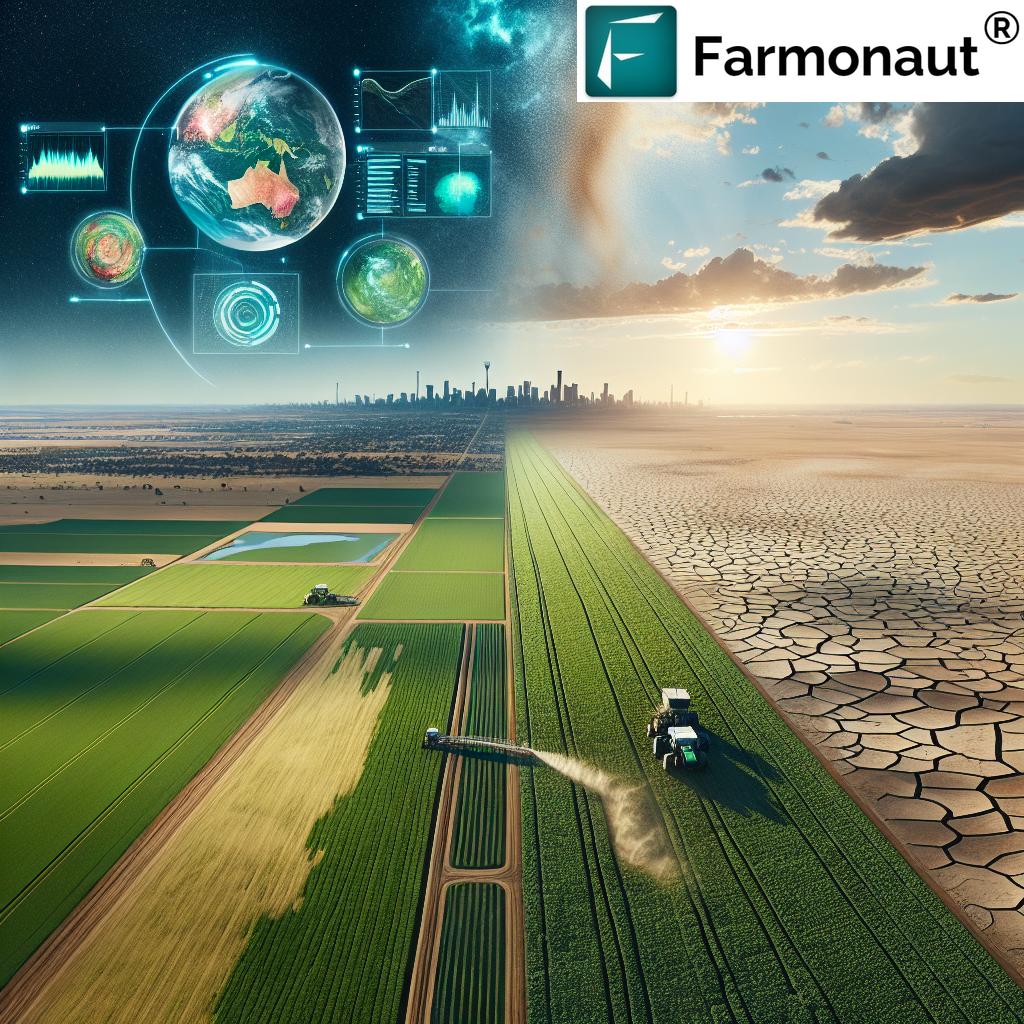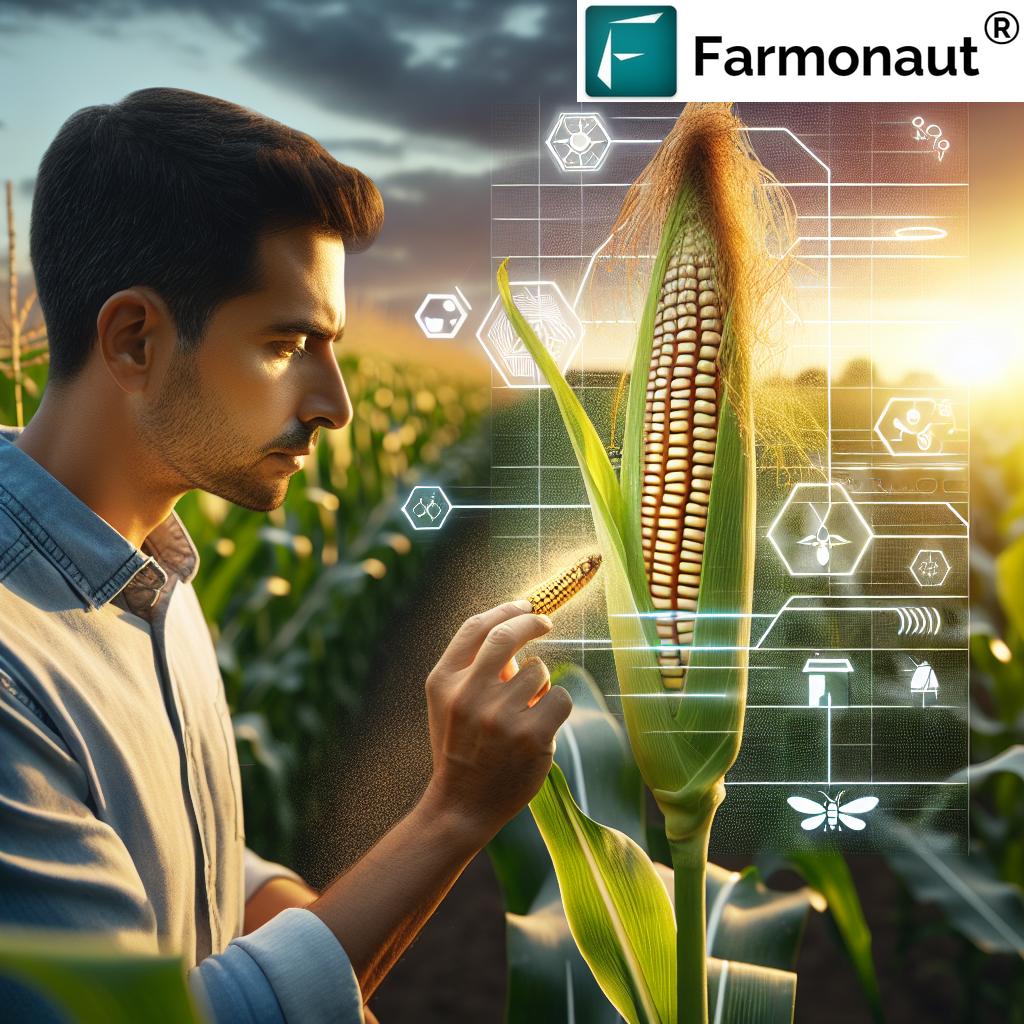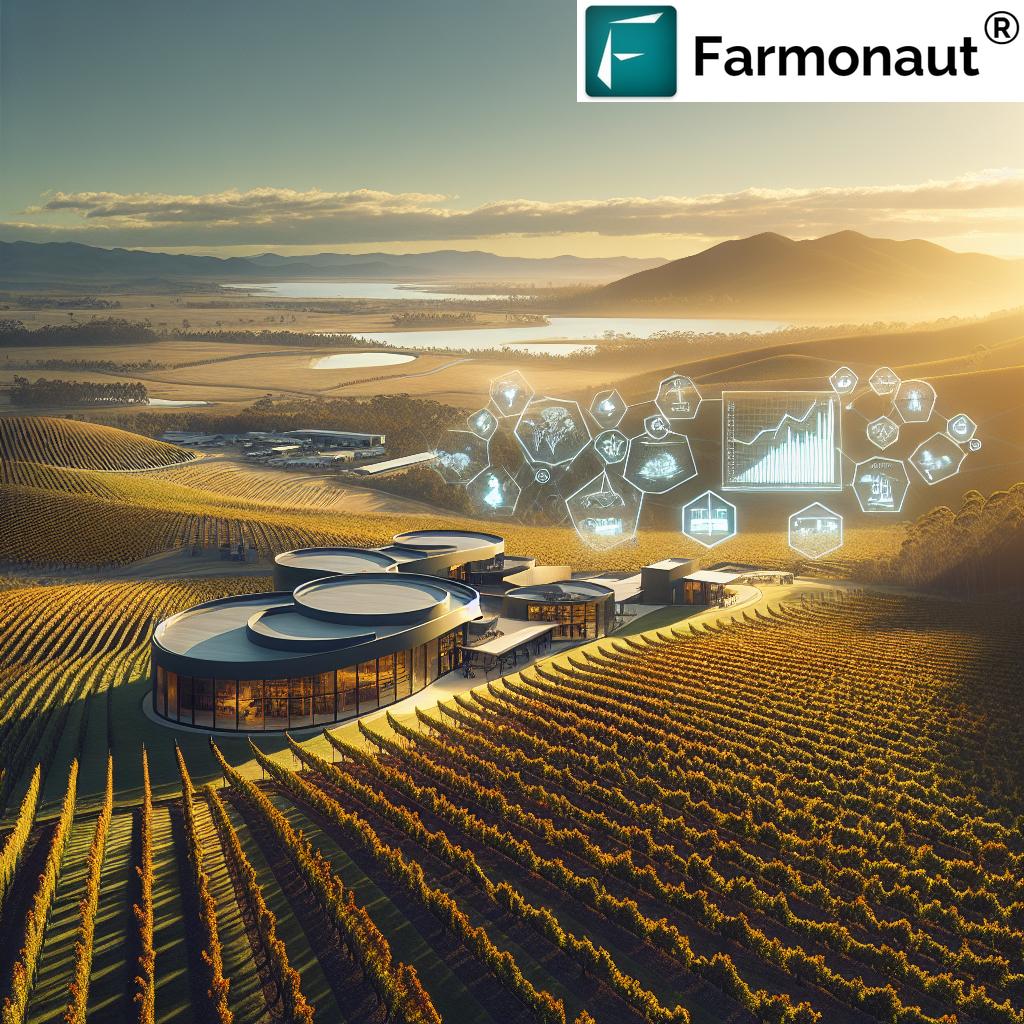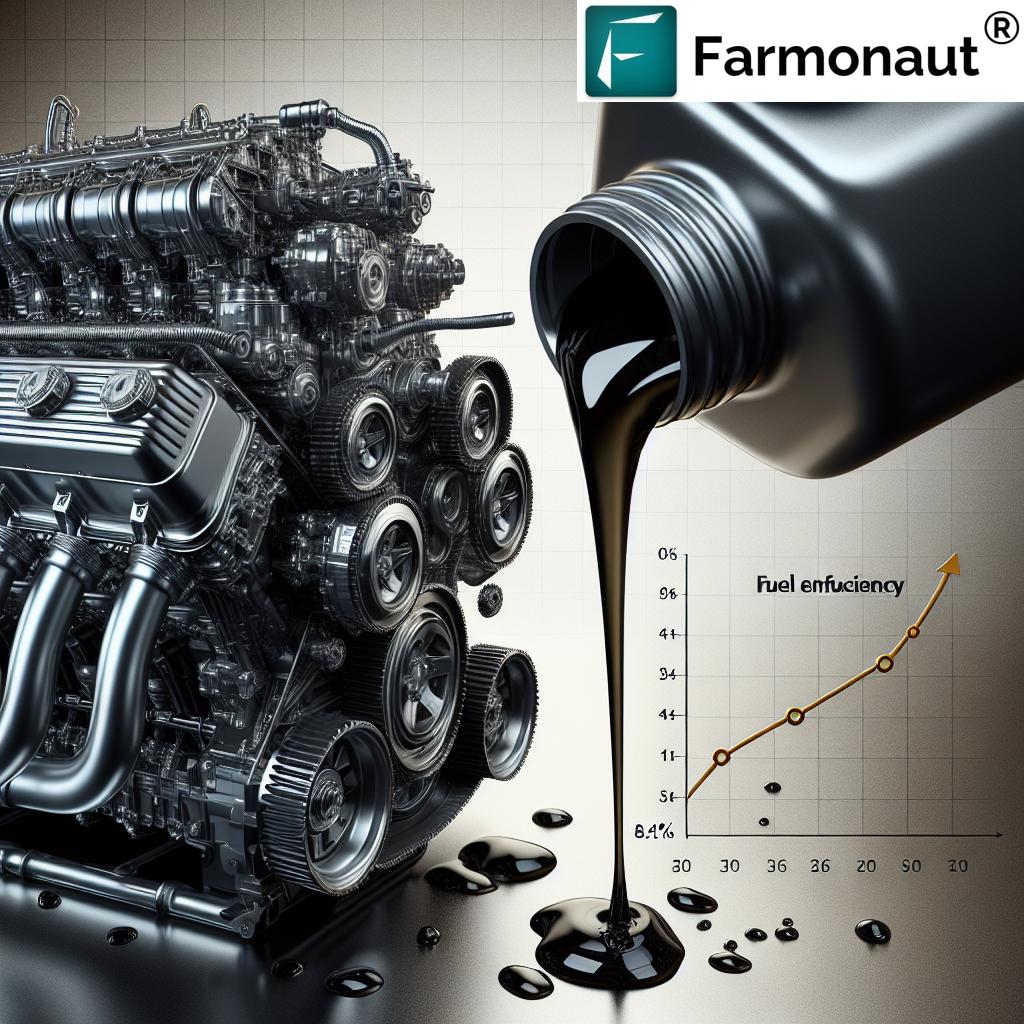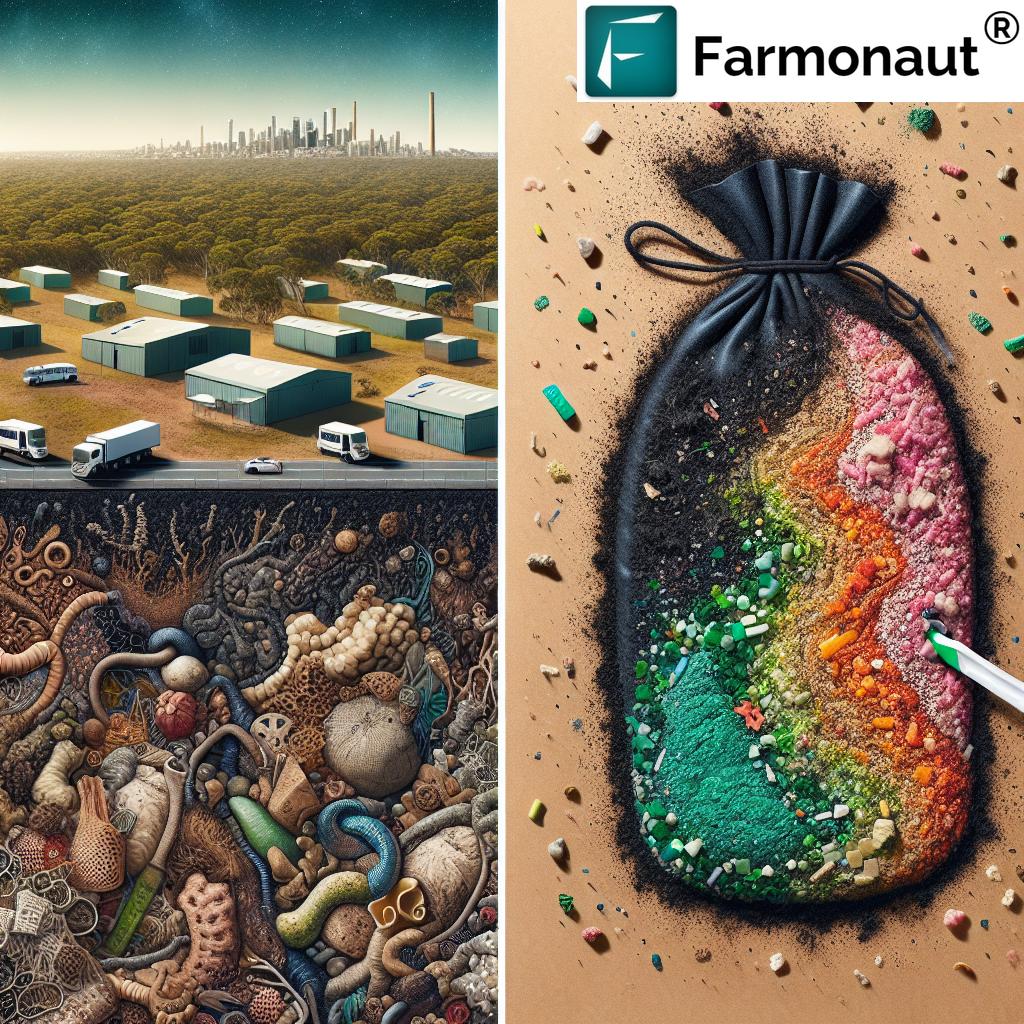Sustainable Agriculture in the Pacific: How Farmonaut Enhances Conservation Programs for Island Farmers
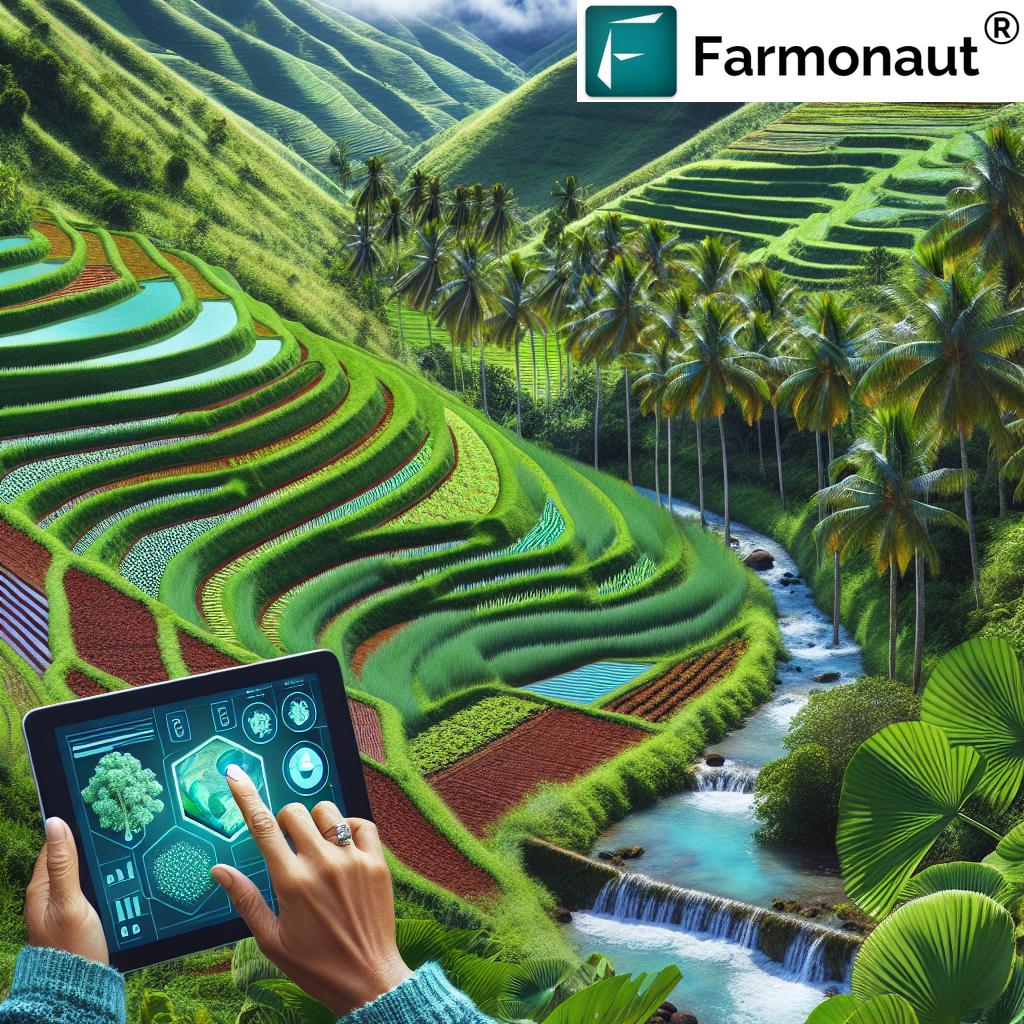
“Pacific Island farmers implement over 10 sustainable agriculture practices, including soil conservation and feral pig control.”
In the lush landscapes of the Pacific Islands, a quiet revolution is taking place. We’re witnessing the transformation of traditional farming practices into sustainable agriculture models that not only feed communities but also protect the delicate island ecosystems. At the heart of this change are innovative conservation programs and cutting-edge technologies that are reshaping the way farmers in Hawaii, American Samoa, and other Pacific islands approach their land and resources.
In this comprehensive exploration, we’ll delve into how sustainable agriculture practices and conservation programs are making a significant impact on farming in the Pacific Islands. We’ll uncover the unique challenges faced by agricultural producers in these regions and showcase the groundbreaking initiatives in agricultural resource management that are addressing these issues head-on.
The Landscape of Pacific Island Agriculture
The Pacific Islands present a unique set of challenges and opportunities for farmers. With limited land resources, vulnerable ecosystems, and the ever-present threat of climate change, agricultural producers in these regions must be particularly resourceful and adaptable. Traditional farming methods, while deeply rooted in cultural practices, are often insufficient to meet the demands of a growing population and changing environmental conditions.
- Limited arable land
- Vulnerability to natural disasters
- Soil erosion and degradation
- Water scarcity in some areas
- Invasive species, including feral pigs
These challenges have necessitated a shift towards more sustainable and efficient farming practices. Conservation programs have emerged as a critical component in this transition, offering farmers the tools, knowledge, and resources to implement environmentally friendly techniques while improving their yields and livelihoods.
Soil and Water Conservation: The Foundation of Sustainable Agriculture
At the core of sustainable agriculture in the Pacific Islands is the conservation of two precious resources: soil and water. Traditional farming methods often led to soil degradation and inefficient water use. However, new conservation programs are introducing practices that protect and enhance these vital resources.
Innovative Soil Conservation Techniques
Soil conservation is paramount in island environments where topsoil can be quickly lost due to heavy rains and steep terrain. Conservation programs are teaching farmers techniques such as:
- Contour plowing: Tilling along the contours of slopes to reduce runoff and erosion
- Cover cropping: Planting secondary crops to protect soil during fallow periods
- Mulching: Using organic materials to protect soil surface and retain moisture
- Terracing: Creating level platforms on hillsides to prevent soil loss
These practices not only prevent soil erosion but also improve soil health, leading to better crop yields and more resilient farming systems.
Water Management Strategies
Efficient water management is crucial in island environments where freshwater resources can be limited. Conservation programs are implementing:
- Drip irrigation systems: Delivering water directly to plant roots to minimize waste
- Rainwater harvesting: Collecting and storing rainwater for use during dry periods
- Drought-resistant crop varieties: Introducing plants that require less water
- Precision irrigation scheduling: Using data to optimize watering times and amounts
By adopting these water conservation strategies, farmers can reduce their reliance on limited freshwater sources and maintain productivity even during dry seasons.
Agroforestry: Blending Agriculture with Forest Conservation
Agroforestry is an ancient practice that’s gaining new relevance in the context of sustainable agriculture. By integrating trees and shrubs into crop and animal farming systems, agroforestry offers multiple benefits:
- Enhanced biodiversity
- Improved soil fertility
- Increased carbon sequestration
- Diversified income streams for farmers
Conservation programs in the Pacific Islands are promoting agroforestry techniques tailored to local ecosystems. For example, in Hawaii, farmers are encouraged to incorporate native species like koa and ohia lehua into their agricultural landscapes, creating a harmonious blend of food production and habitat restoration.
“Agroforestry techniques in Pacific Islands promote biodiversity, supporting more than 50 native plant species per hectare.”
Tackling Invasive Species: The Feral Pig Challenge
One of the unique challenges faced by Pacific Island farmers is the threat posed by invasive species, particularly feral pigs. These animals can cause extensive damage to crops and native ecosystems. Conservation programs are addressing this issue through innovative smart farming solutions:
- Feral pig tracking systems: Using GPS collars to monitor pig movements and predict crop damage
- Automated deterrent devices: Installing sound and light-based systems to repel pigs from agricultural areas
- Community-based control programs: Coordinating efforts among farmers to manage pig populations
- Habitat modification: Designing farm layouts to discourage pig intrusions
These strategies not only protect crops but also contribute to the preservation of native plant species that are vulnerable to feral pig damage.
Precision Agriculture: Farmonaut’s Role in Enhancing Conservation Efforts
As we navigate the complexities of sustainable agriculture in the Pacific Islands, precision agriculture technologies emerge as powerful allies in conservation efforts. Farmonaut, a pioneering agricultural technology company, offers advanced, satellite-based farm management solutions that complement and enhance existing conservation programs.
Satellite-Based Crop Health Monitoring
Farmonaut’s satellite imagery technology provides farmers with real-time insights into crop health, soil moisture levels, and vegetation indices. This data is invaluable for:
- Optimizing irrigation schedules to conserve water
- Identifying areas of soil degradation for targeted conservation measures
- Monitoring the success of agroforestry initiatives
- Tracking the spread of invasive plant species
By leveraging this technology, farmers can make informed decisions that align with conservation goals while improving their agricultural productivity.
AI-Driven Advisory Systems
Farmonaut’s Jeevn AI advisory system takes precision agriculture a step further by providing personalized recommendations based on satellite data and local environmental conditions. This system helps farmers:
- Implement sustainable pest management strategies
- Optimize fertilizer use to reduce runoff and pollution
- Plan crop rotations that enhance soil health
- Adapt to changing climate patterns
The integration of AI into farm management supports the goals of conservation programs by promoting practices that are both environmentally friendly and economically viable.
Ecosystem Restoration: Farming as a Tool for Conservation
Conservation programs in the Pacific Islands are increasingly recognizing the potential of agriculture not just as a sustainable practice, but as an active tool for ecosystem restoration. Innovative projects are demonstrating how farming can contribute to the regeneration of degraded landscapes:
- Wetland restoration: Integrating taro cultivation with wetland rehabilitation
- Coastal buffer zones: Planting salt-tolerant crops to protect shorelines from erosion
- Native species corridors: Creating wildlife pathways through agricultural lands
- Pollinator habitats: Designating areas within farms for native flowering plants
These projects showcase how agriculture and conservation can work hand in hand, creating resilient landscapes that support both human needs and ecological health.
Agricultural Pollution Mitigation: Protecting Island Ecosystems
Agricultural pollution poses a significant threat to the delicate ecosystems of Pacific Islands. Conservation programs are addressing this challenge through a range of strategies:
Improved Piggery Systems
Recognizing the cultural importance of pig farming in many Pacific Island communities, conservation initiatives are focusing on improving piggery systems to reduce environmental impact:
- Implementing biogas digesters to convert waste into energy
- Designing composting systems for nutrient recycling
- Introducing water-efficient cleaning methods
- Promoting raised-floor pens to minimize soil and water contamination
Integrated Pest Management (IPM)
To reduce reliance on chemical pesticides, conservation programs are promoting IPM strategies that include:
- Biological control using natural predators
- Crop rotation to break pest cycles
- Pheromone traps for monitoring and control
- Resistant crop varieties to reduce pesticide need
These approaches not only protect island ecosystems from chemical pollution but also contribute to the production of healthier, chemical-free crops.
Farmonaut API | API Developer Docs
Local Partnerships: Enhancing Conservation Service Delivery
The success of conservation programs in the Pacific Islands hinges on strong local partnerships. By collaborating with community organizations, government agencies, and indigenous groups, these initiatives ensure that conservation efforts are culturally appropriate and locally relevant.
Empowering Underserved Communities
Conservation programs are making concerted efforts to reach underserved farming communities, including:
- Providing technical assistance in local languages
- Offering mobile outreach services to remote areas
- Developing peer-to-peer learning networks
- Creating youth engagement programs to ensure long-term sustainability
These initiatives not only improve access to conservation resources but also build local capacity for sustainable agriculture.
Bridging Traditional Knowledge and Modern Conservation
One of the most exciting aspects of conservation programs in the Pacific Islands is the integration of traditional ecological knowledge with modern scientific approaches. This synthesis creates powerful, culturally-rooted conservation strategies:
- Traditional crop varieties: Reintroducing and preserving heritage plant species
- Indigenous land management practices: Incorporating traditional fire management and crop rotation systems
- Cultural harvesting techniques: Adapting ancestral fishing and gathering methods for sustainable use
- Spiritual connections to land: Recognizing and respecting sacred natural sites in conservation planning
By honoring traditional knowledge, conservation programs ensure that sustainable agriculture practices are not only effective but also deeply meaningful to the communities they serve.
Accessing Resources: Implementing Conservation Programs
For farmers interested in implementing conservation programs on their lands, numerous resources are available:
- Government grants: Financial assistance for implementing sustainable practices
- Technical workshops: Hands-on training in conservation techniques
- Online learning platforms: Accessible education on sustainable agriculture
- Conservation partnerships: Collaborations with NGOs and research institutions
Farmers are encouraged to reach out to local agricultural extension offices or conservation organizations to explore these opportunities.
The Future of Sustainable Agriculture in the Pacific
As we look to the future, the trajectory of sustainable agriculture in the Pacific Islands is promising. The convergence of traditional wisdom, innovative conservation programs, and cutting-edge technologies like those offered by Farmonaut paints a picture of resilient, productive, and ecologically harmonious farming systems.
Key trends to watch include:
- Increased adoption of precision agriculture technologies
- Expansion of agroforestry and permaculture systems
- Greater integration of renewable energy in farm operations
- Development of climate-resilient crop varieties
- Enhanced regional cooperation on agricultural conservation
These developments promise to strengthen food security, preserve cultural heritage, and protect the unique biodiversity of the Pacific Islands for generations to come.
Comparative Analysis: Traditional vs. Sustainable Agriculture in Pacific Islands
| Agricultural Aspect | Traditional Methods | Sustainable Approaches |
|---|---|---|
| Soil Conservation | Slash-and-burn techniques | Contour plowing, cover cropping (30% reduction in soil erosion) |
| Water Management | Flood irrigation | Drip irrigation, rainwater harvesting (20% reduction in water usage) |
| Pest Control | Chemical pesticides | Integrated Pest Management (IPM) with feral pig control (50% reduction in chemical use) |
| Crop Diversity | Monoculture farming | Polyculture and agroforestry (100% increase in biodiversity) |
| Resource Efficiency | Manual tracking and intuition-based decision making | Precision agriculture with satellite monitoring (25% increase in resource efficiency) |
Conclusion: A Sustainable Path Forward
The journey towards sustainable agriculture in the Pacific Islands is a testament to the power of innovation, collaboration, and respect for traditional knowledge. As we’ve explored, conservation programs are making significant strides in addressing the unique challenges faced by island farmers, from soil erosion to invasive species management.
The integration of precision agriculture technologies, such as those provided by Farmonaut, offers exciting possibilities for enhancing these conservation efforts. By providing real-time data and AI-driven insights, these tools empower farmers to make informed decisions that benefit both their livelihoods and the environment.
As we move forward, the continued success of sustainable agriculture in the Pacific will depend on ongoing partnerships between farmers, conservationists, technology providers, and local communities. Together, we can create a future where Pacific Island agriculture not only feeds populations but also nurtures the rich ecosystems that make these islands so unique and valuable.
The path to sustainable agriculture is not without its challenges, but with dedication, innovation, and respect for both tradition and technology, Pacific Island farmers are well-positioned to lead the way in creating resilient, productive, and environmentally harmonious agricultural systems.
FAQ Section
Q: What are the main challenges facing farmers in the Pacific Islands?
A: Pacific Island farmers face challenges including limited arable land, vulnerability to natural disasters, soil erosion, water scarcity, and invasive species like feral pigs.
Q: How does agroforestry benefit Pacific Island agriculture?
A: Agroforestry enhances biodiversity, improves soil fertility, increases carbon sequestration, and provides diversified income streams for farmers.
Q: What role does precision agriculture play in conservation efforts?
A: Precision agriculture technologies, like those offered by Farmonaut, provide real-time data on crop health and soil conditions, enabling farmers to optimize resource use and implement targeted conservation measures.
Q: How are conservation programs addressing the feral pig problem?
A: Programs are implementing smart farming solutions such as GPS tracking systems, automated deterrent devices, and community-based control programs to manage feral pig populations.
Q: Can traditional farming methods be integrated with modern conservation practices?
A: Yes, many conservation programs in the Pacific Islands are successfully integrating traditional ecological knowledge with modern scientific approaches to create culturally-rooted and effective conservation strategies.










